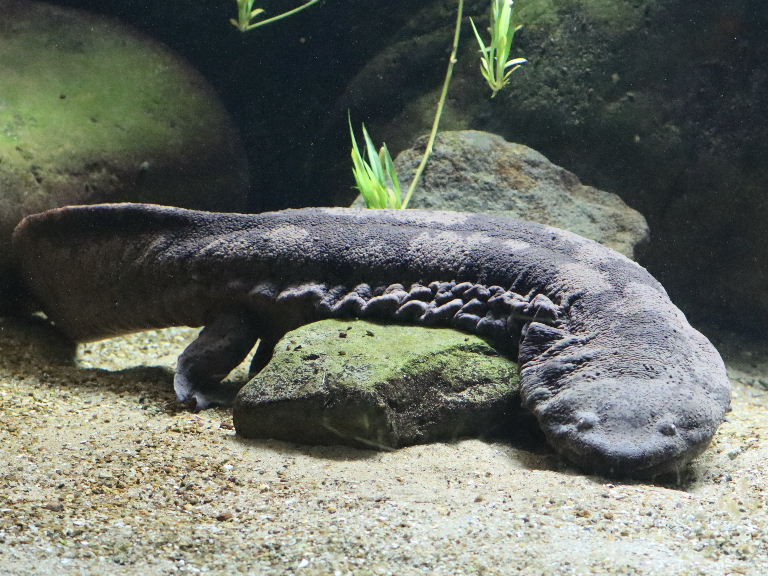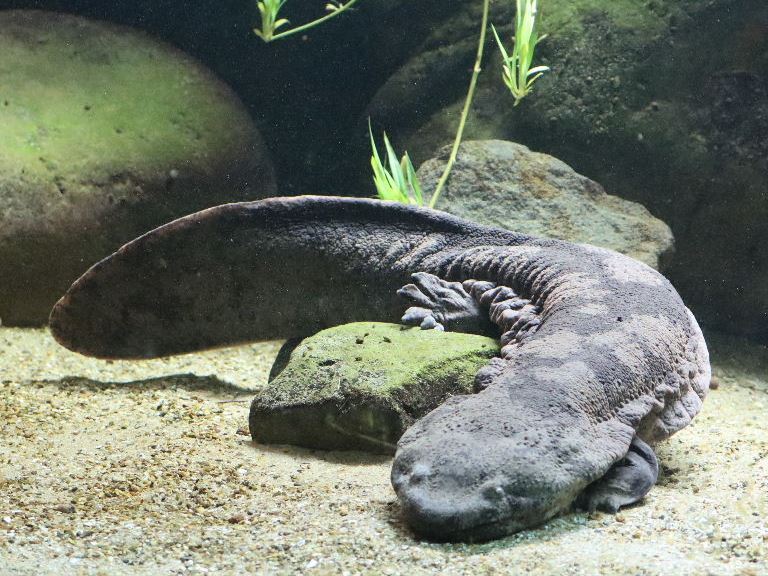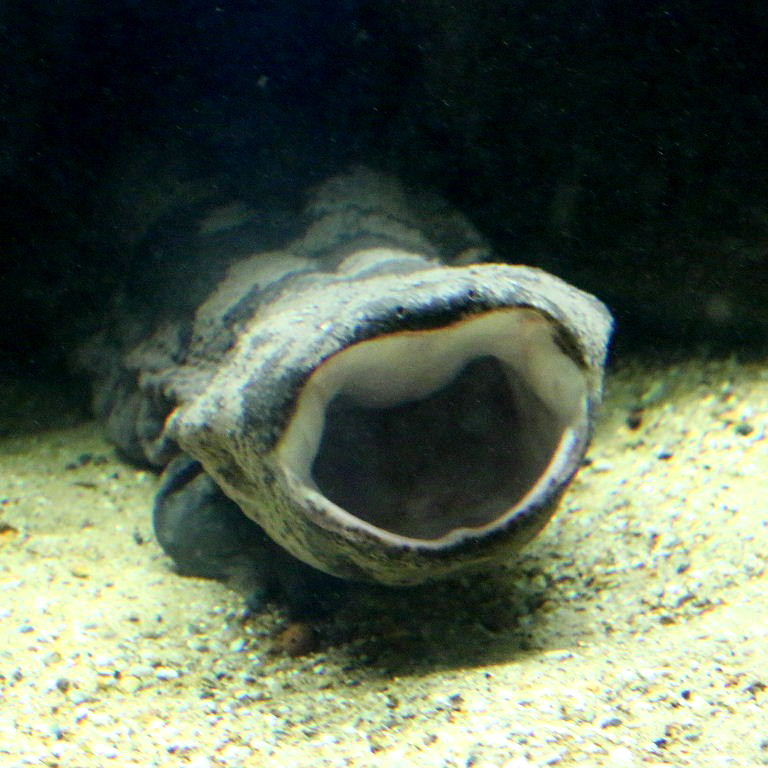Chinese Giant Salamander Andrias davidianus


The Chinese Giant Salamander is native to rocky mountain stream and lakes of central China.



It is the second largest amphibian in the world, after the similar Southern Chinese Giant Salamander,
Andrias sligoi, identified as a separate species in August 2019.



Coming up to breathe air. It has small eyes but strong sensory skills. The skin is loose so it is not torn in its rocky habitat.



It can grow to a length of some 1.8 meters (nearly 6 feet) and live for over 100 years.
The one shown is only some 4 years old and some 30cm (1 foot) in length. Prey includes any invertebrates, fish, small mammal or another
amphibian, including their own kind.



It is critically endangered, mainly by hunting and poaching for human consumption - a luxury food item in China -
but also by habitat loss, pollution and disease.



Gulping water. Its nearest relatives, apart from one or more other Chinese species, are the
slightly smaller Japanese Giant Salamander and the significantly smaller North American Hellbender.



Stop Press: Only in August 2019, a separate species was confirmed, called the Southern Chinese Giant Salamander,
Andrias sligoi, partly based on DNA evidence from London's Natural History Museum's specimen (previously from London Zoo) and
partly from the thousands of wild-caught individuals in salamander food farms across China. The latter source indicates there may also
be a third, Eastern Chinese, species and possibly others, all separated in the time of the dinosaurs when the Tibetan Plateau rose.
Unfortunately, the food farms may be hybridising these species.

